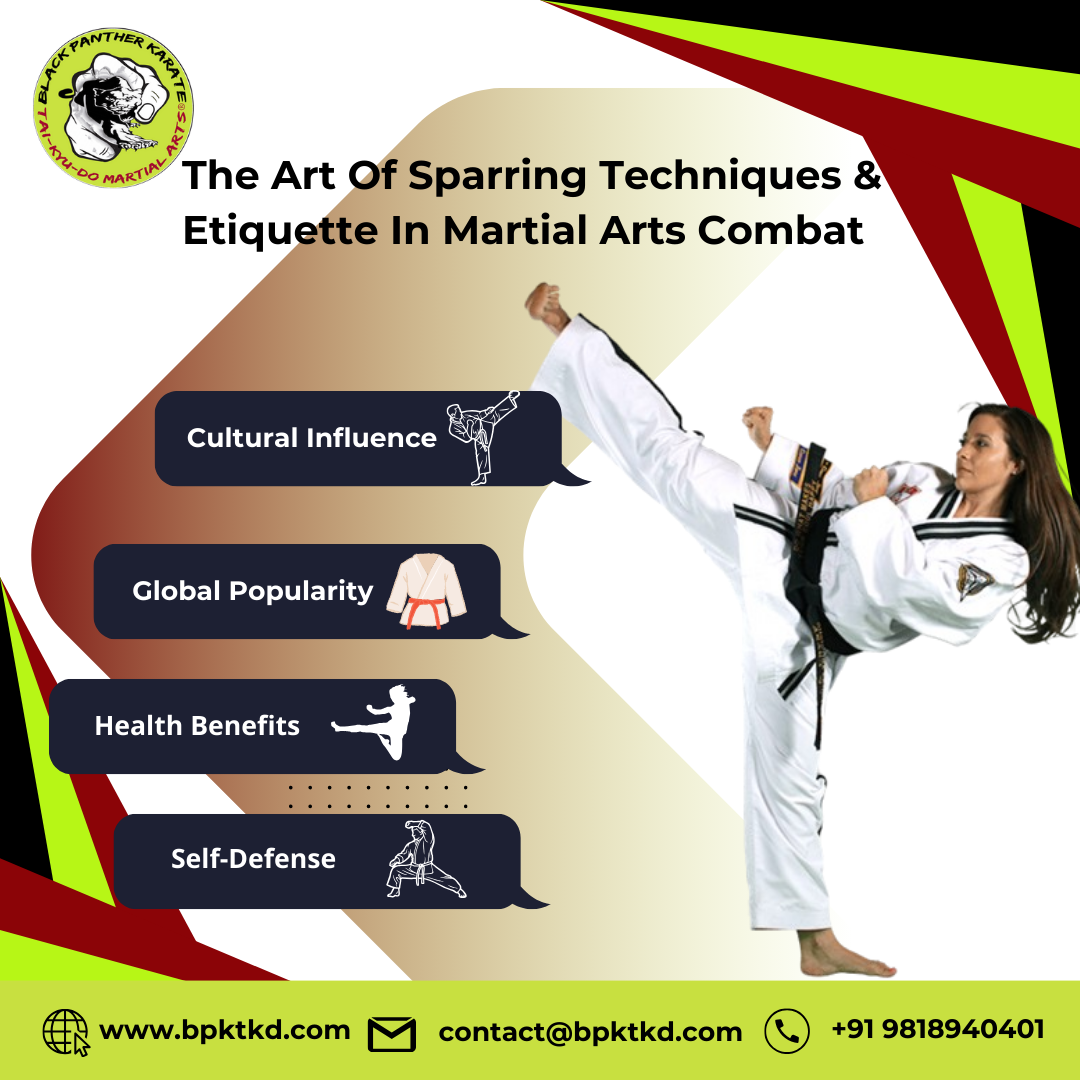
The art of sparring techniques and manners in combat martial arts
The Art of Sparring: Mastering Techniques and Etiquette in Martial Arts Combat with Affordable Karate Classes
Introduction:
In the world of martial arts, sparring is a dynamic and essential component that bridges the gap between technique practice and real-world application. The art of sparring not only hones combat skills but also instills discipline, strategy, and respect. In this blog, we explore the techniques and etiquette involved in martial arts combat, highlighting the accessibility of these valuable lessons through affordable karate classes.
Understanding the Purpose of Sparring:
Sparring, also known as randori or kumite depending on the martial arts discipline, is a controlled form of combat designed to simulate real-world situations.
It serves several purposes:
Skill Application:
Sparring allows practitioners to apply the techniques they’ve learned in a dynamic and unpredictable environment. It tests their ability to adapt, strategize, and execute movements effectively.
Developing Timing and Distance:
In sparring, participants learn to gauge distance, timing, and rhythm. These skills are crucial for executing precise strikes, blocks, and counterattacks while maintaining a defensive posture.
Building Confidence:
Engaging in controlled combat situations helps build confidence. It allows practitioners to test their abilities against live opponents, promoting a deeper understanding of their strengths and areas for improvement.
Promoting Sportsmanship:
Sparring teaches valuable lessons in sportsmanship and respect. Participants learn to appreciate their opponents, regardless of skill level, and adhere to the rules and etiquette of martial arts combat.
Sparring Techniques:
Footwork: Effective footwork is the foundation of successful sparring. Agile and well-timed movement enables practitioners to control the distance, evade attacks, and set up their own offensive strategies.
Jab and Cross:
Fundamental striking techniques like the jab and cross are essential in sparring. These quick and straight punches allow practitioners to gauge distance, create openings, and disrupt their opponent’s rhythm.
Kicks:
Various kicking techniques, such as roundhouse kicks, front kicks, and side kicks, add versatility to sparring. Well-executed kicks can target different areas of an opponent’s body, providing strategic advantages.
Blocks and Parries:
Defensive techniques, including blocks and parries, are crucial for deflecting and neutralizing incoming attacks. These skills are essential for maintaining a strong defense while looking for opportunities to counter.
Counterattacks:
The ability to counterattack effectively is a key component of sparring. Practitioners learn to capitalize on openings created by their opponents, turning defensive maneuvers into offensive opportunities.
Clinching and Grappling:
Some martial arts styles incorporate clinching and grappling techniques into sparring. Understanding how to control an opponent in close-quarters situations adds depth to a martial artist’s skill set.
Etiquette in Martial Arts Combat:
Respect for Opponents: The foundation of martial arts etiquette is respect. Regardless of the intensity of sparring, practitioners should approach their opponents with a humble and respectful attitude.
Controlled Intensity:
Affordable karate classes often emphasize controlled sparring intensity. Practitioners learn to strike with precision and power while avoiding unnecessary aggression that may lead to injuries.
Observing Rules and Regulations:
Each martial arts school and style has specific rules and regulations governing sparring. Adhering to these guidelines ensures a safe and structured environment for all participants.
Mindful Contact:
Practitioners are encouraged to make mindful contact during sparring. Striking with control minimizes the risk of injury while still allowing participants to test their techniques effectively.
Communication with Partners:
Effective communication is vital during sparring. Practitioners should discuss their comfort levels, goals, and any specific concerns with their sparring partners to foster a positive and collaborative training experience.
Affordable Karate Classes:
Accessible Paths to Sparring Mastery: Affordable karate classes provide accessible avenues for individuals to learn and master the art of sparring. Here’s why opting for affordable classes is advantageous:
Inclusive Learning Environment:
Affordable karate classes often prioritize creating an inclusive learning environment. This ensures that individuals from diverse backgrounds can access valuable sparring techniques and etiquette without financial barriers.
Experienced Instructors:
Instructors in affordable karate classes are often experienced and passionate about sharing their knowledge. They provide expert guidance on sparring techniques, emphasizing safety and effective learning.
Community Support:
Affordable karate classes foster a sense of community and support among participants. This collaborative environment encourages shared learning experiences and provides a supportive network for practitioners to develop their sparring skills.
Progressive Curriculum:
Many affordable karate classes follow a progressive curriculum that introduces sparring gradually. This allows beginners to build a strong foundation in fundamental techniques before advancing to more complex sparring strategies.
Flexible Training Schedules:
Affordable karate classes often offer flexible training schedules, accommodating individuals with diverse commitments. This flexibility ensures that aspiring martial artists can engage in sparring sessions without compromising other aspects of their lives.
Conclusion:
The art of sparring is a multifaceted journey that goes beyond physical combat—it encompasses mental resilience, strategic thinking, and a profound respect for one’s opponents. Through affordable karate classes, individuals can embark on this journey without financial constraints, accessing valuable lessons in sparring techniques and etiquette. As practitioners engage in the controlled chaos of sparring, they not only refine their martial arts skills but also cultivate the discipline and camaraderie that define the essence of martial arts combat.

